Polyester is everywhere—from activewear to your couch. But what do we really know about it?
Polyester is a synthetic fiber derived from petroleum that is strong, wrinkle-resistant, and cheap to produce, commonly used in clothing, home textiles, and industrial applications.
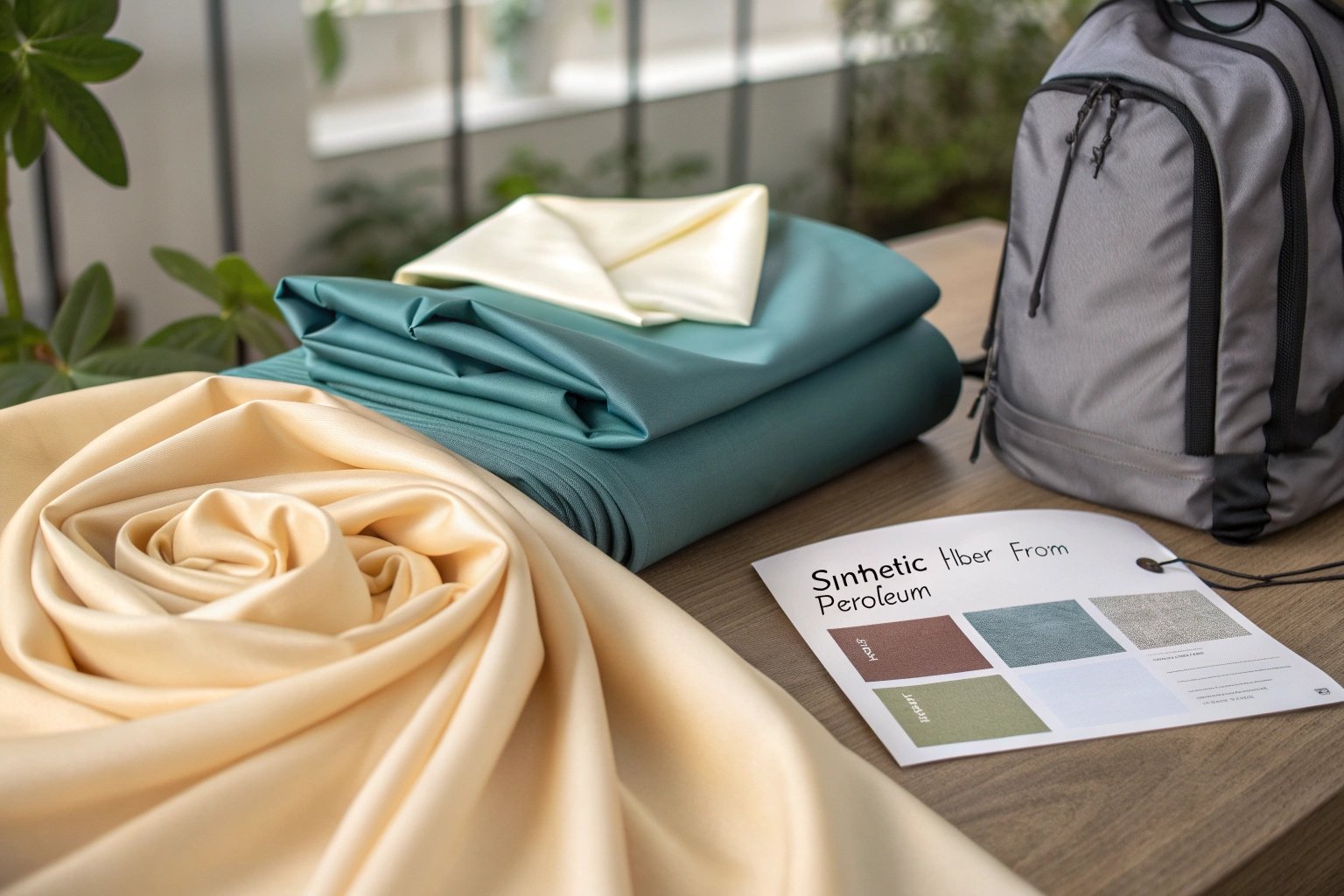
The first time I handled polyester fabric, I thought it was just plastic cloth. It felt smooth, yes—but I wondered why so many brands chose it. Years later, after working with different blends and tracking global fabric orders, I understood. Polyester isn’t just a budget option—it’s an industry backbone. Knowing where it comes from and how it behaves helps every sourcing decision I make.
What is polyester made from?
Despite how it feels, polyester doesn’t come from nature.
Polyester is made from petroleum-based chemicals, mainly polyethylene terephthalate (PET), through a process that melts and spins the plastic into fibers.
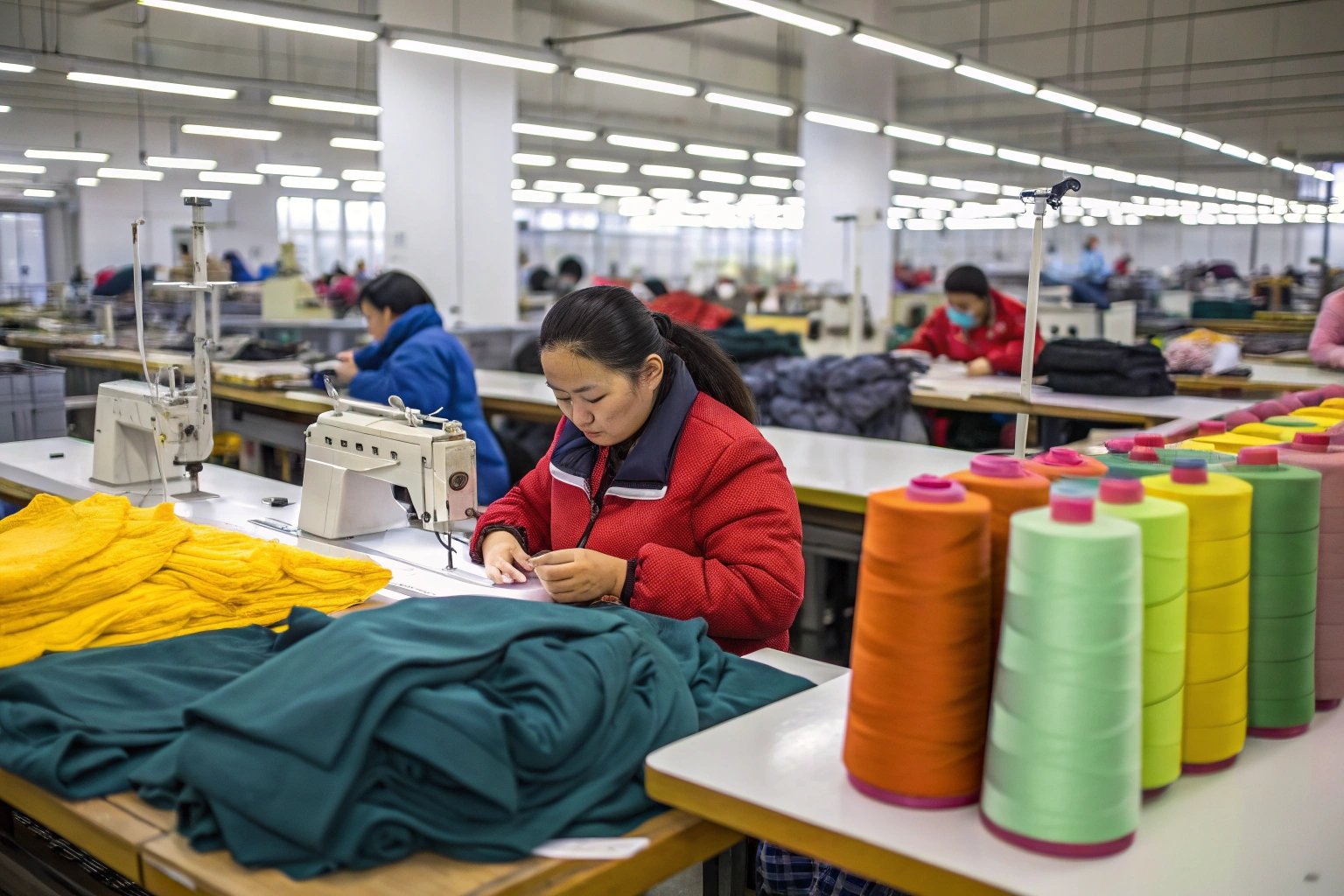
It starts with crude oil. Through chemical reactions involving ethylene glycol and terephthalic acid, manufacturers create long polymer chains. These are then melted and spun into threads. The result? A strong, versatile fiber. Think of it like creating plastic spaghetti, then weaving it into fabric.
Here’s a simplified breakdown:
| Step | Process |
|---|---|
| Raw Material | Petroleum derivatives (like ethylene glycol) |
| Reaction | Forming PET polymer through heating |
| Fiber Creation | Extrusion and spinning into threads |
| Fabrication | Weaving or knitting into textile |
This synthetic origin explains polyester’s durability and resistance to wrinkles. But it also raises sustainability questions—something we’ll get into later.
Why is polyester so widely used?
If there’s one fabric that dominates, it’s polyester.
Polyester is widely used because it’s strong, durable, quick-drying, cheap to produce, and easy to blend with other fibers, making it ideal for mass-market products.
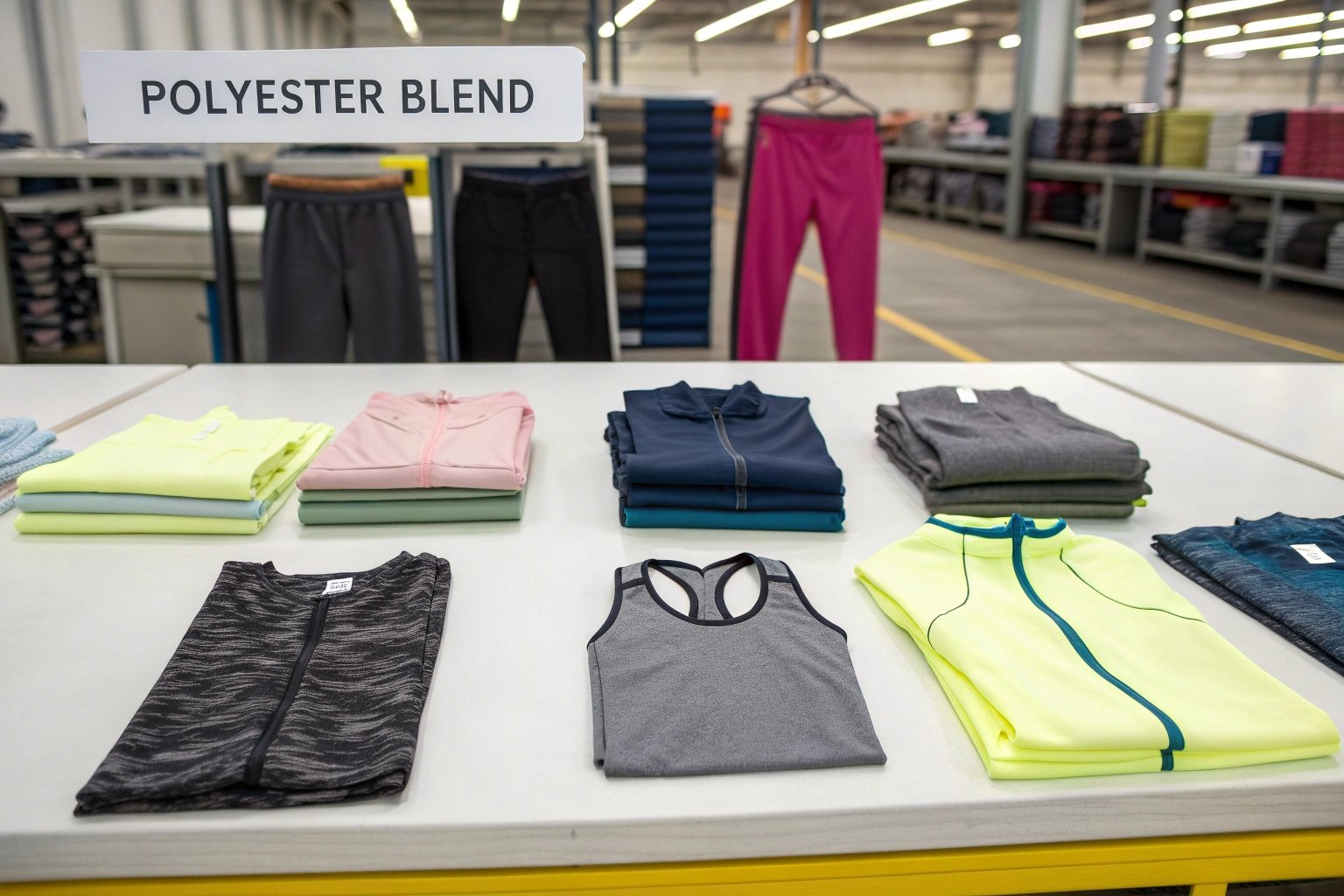
I see polyester used in over 60% of global clothing production. That’s not just because it’s cheap—it also works. In our own product lines at Yoplook, polyester-blended leggings and tops hold shape better and last longer. Retailers love it because it ships well (doesn’t wrinkle) and wears even better.
Whether it’s T-shirts, hoodies, sports bras, or swimwear, polyester offers benefits that natural fibers can’t always match. It’s also a go-to for sublimation printing, which makes it popular in custom apparel and athleisure collections.
What are the benefits of polyester fabric?
Polyester may not be natural—but it sure is practical.
Polyester is durable, wrinkle-resistant, quick-drying, lightweight, and colorfast, making it ideal for everything from sportswear to travel gear.
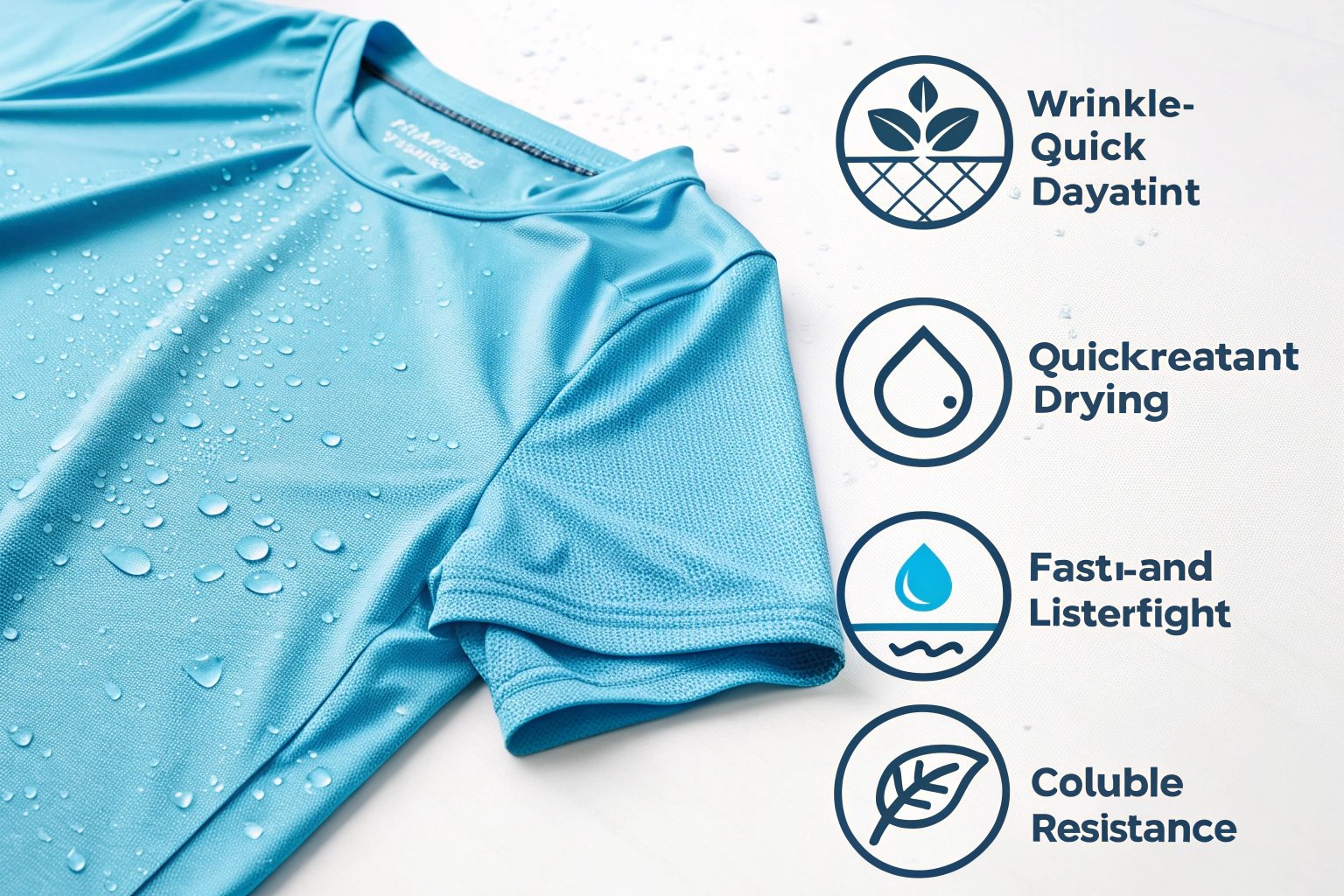
We use polyester for collections where function matters more than feel. Customers want gear that survives workouts, multiple washes, and still looks new. Polyester delivers that. It’s also great for outerwear because it repels water better than cotton.
Let’s break it down:
| Benefit | Description |
|---|---|
| Strength | Doesn’t tear or wear out easily |
| Wrinkle-Free | Holds shape in packaging and wear |
| Quick-Drying | Great for sweat and rain |
| Lightweight | Comfortable even in layers |
| Colorfast | Colors stay bright after washes |
Still, pure polyester can feel stiff or plasticky. That’s why many brands blend it with cotton, viscose, or spandex to balance performance with softness.
What are the downsides of polyester?
With all those upsides, there must be a catch.
Polyester traps heat, doesn’t breathe well, sheds microplastics, and is not biodegradable, raising comfort and environmental concerns.
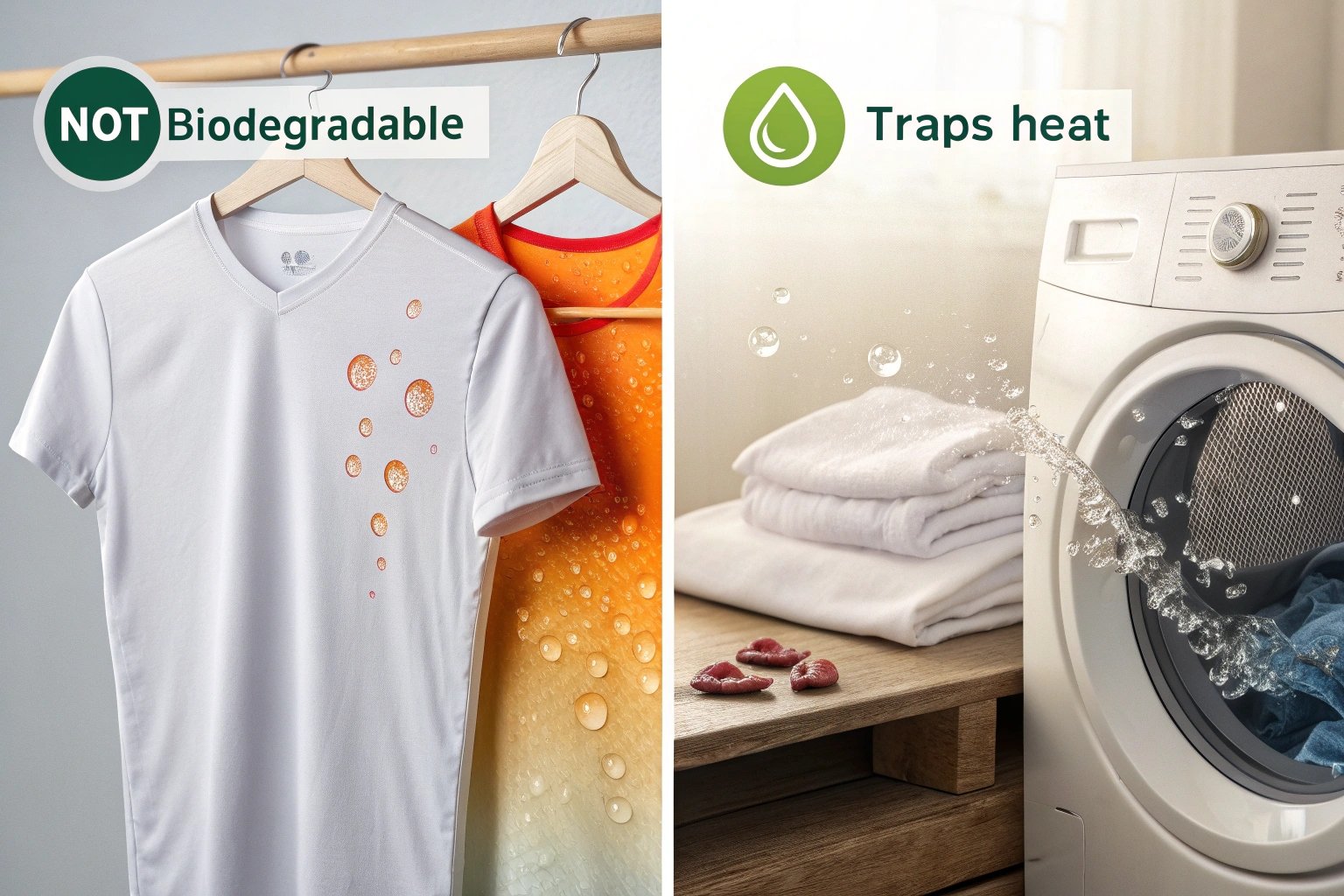
I’ve had buyers complain that polyester gear gets too hot in summer. It doesn’t wick moisture like some newer performance blends. And it builds up static, which can be annoying.
But the bigger issue is sustainability. Polyester doesn’t break down naturally. Every wash releases microplastics into the water. That’s become a major concern for eco-conscious consumers.
That’s why I often recommend recycled polyester options. They’re not perfect, but they reduce the need for virgin oil and reuse existing plastic waste.
Is polyester sustainable?
The answer isn’t black or white—it depends on the source.
Virgin polyester is not sustainable due to oil use and microplastic pollution, but recycled polyester (rPET) offers a more eco-friendly alternative by repurposing plastic waste.
We’ve shifted many of our bulk orders to recycled polyester at Yoplook. It performs just like standard polyester but uses old bottles and plastic scrap instead of crude oil. Some of our clients in Germany and the UK now insist on it for all activewear SKUs.
Still, rPET isn’t a perfect solution. It still sheds microfibers. And the recycling process uses energy. But when paired with closed-loop production and fabric innovation, it’s a step forward.
Here’s a quick comparison:
| Type | Eco Impact |
|---|---|
| Virgin Polyester | Oil-intensive, non-biodegradable |
| Recycled PET | Uses waste plastic, slightly lower footprint |
What are the common uses of polyester in fashion?
Polyester is in more categories than you might expect.
Polyester is used in sportswear, outerwear, casual tops, leggings, underwear, linings, and accessories, often blended for comfort or enhanced performance.
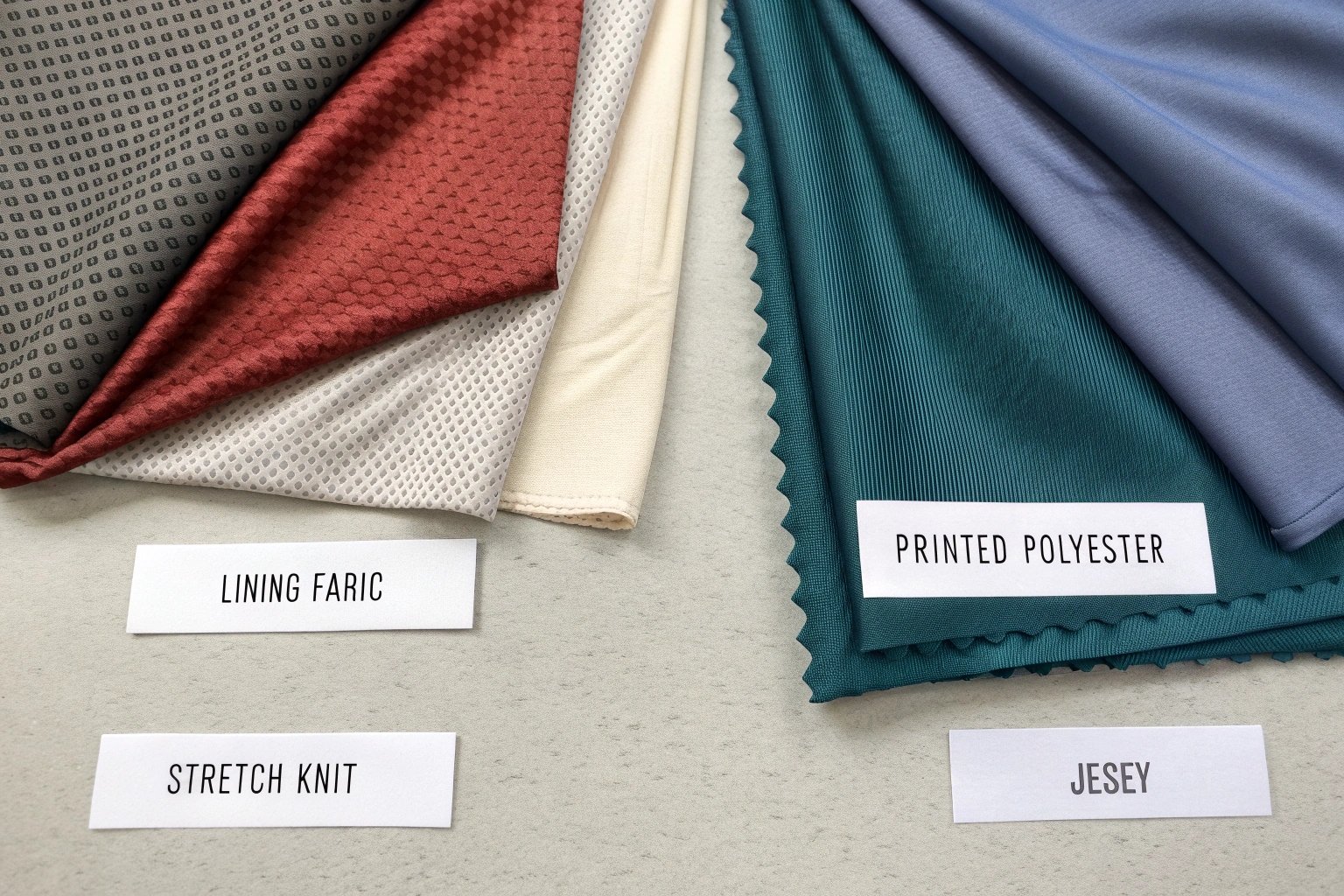
In our own collections, we’ve used polyester for everything from racerback tanks to men’s track jackets. It performs consistently, ships wrinkle-free, and prints well for brand logos or patterns.
Other brands use it in linings, where silk would be too costly. Or in underwear, blended with spandex for stretch and durability. In accessories, like hats and bags, it holds structure better than cotton.
Here’s a quick usage table:
| Use Case | Why Polyester? |
|---|---|
| Sportswear | Moisture control, shape retention |
| Outerwear | Water resistance, insulation |
| Linings | Smooth finish, low cost |
| Casual Wear | Easy care, wrinkle-resistant |
| Bags/Hats | Holds shape, durable |
How does polyester compare to other fabrics?
It’s synthetic, yes—but it outperforms in key ways.
Compared to cotton or viscose, polyester lasts longer and handles moisture better but offers less breathability and eco-friendliness.
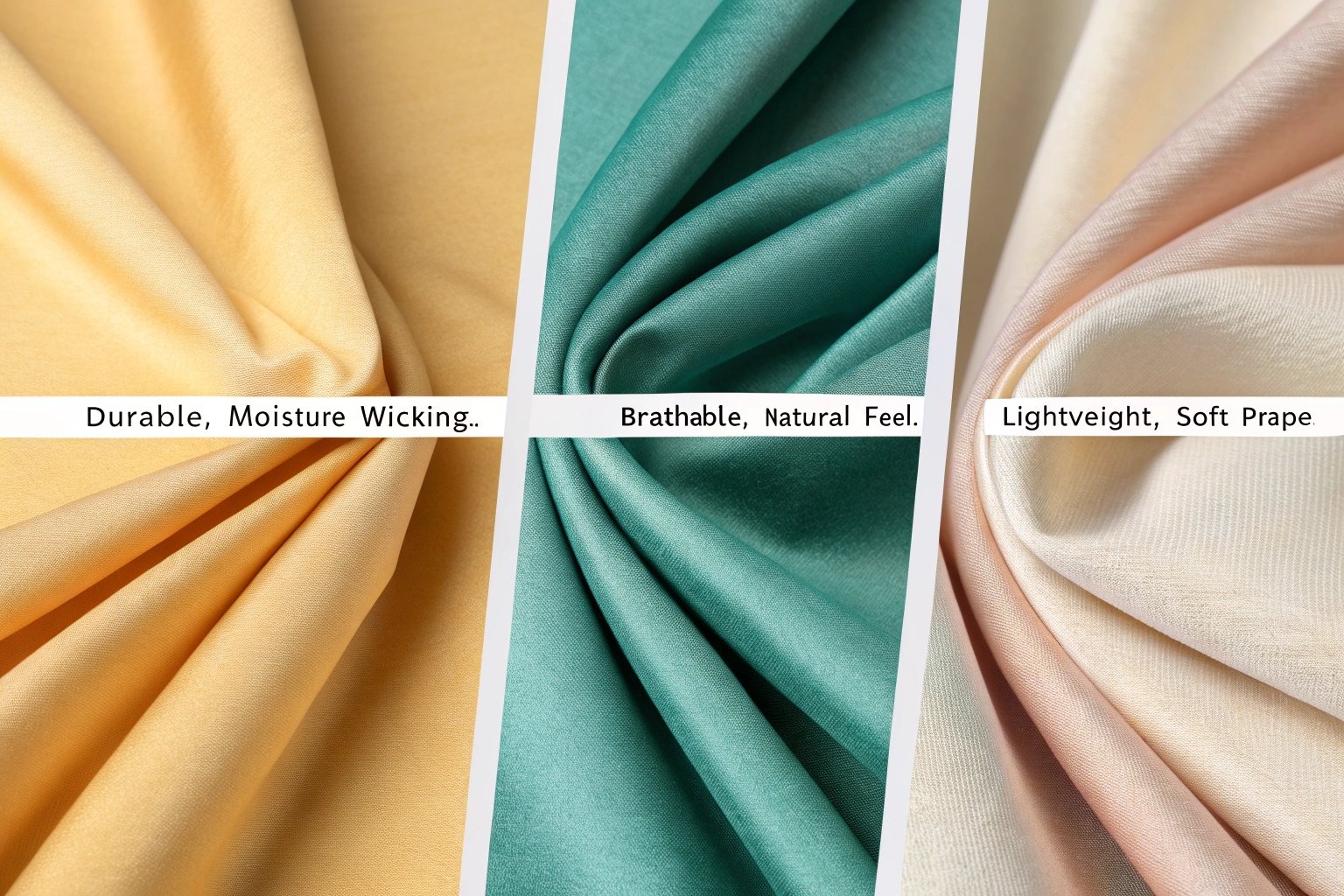
I usually guide clients through this choice based on end use. For casual comfort, cotton or viscose works. For durability and weather resistance, polyester wins.
| Fabric | Breathability | Durability | Eco-Friendly | Feel |
|---|---|---|---|---|
| Polyester | Low | High | Low to Medium | Smooth, firm |
| Cotton | High | Medium | Medium to High | Soft, natural |
| Viscose | High | Low-Medium | Medium | Silky, flowy |
Blends often give the best of all worlds. That’s why most modern garments are rarely made with just one fiber type.
Conclusion
Polyester is powerful, practical, and everywhere—but knowing its origin and eco impact helps you use it wisely.

